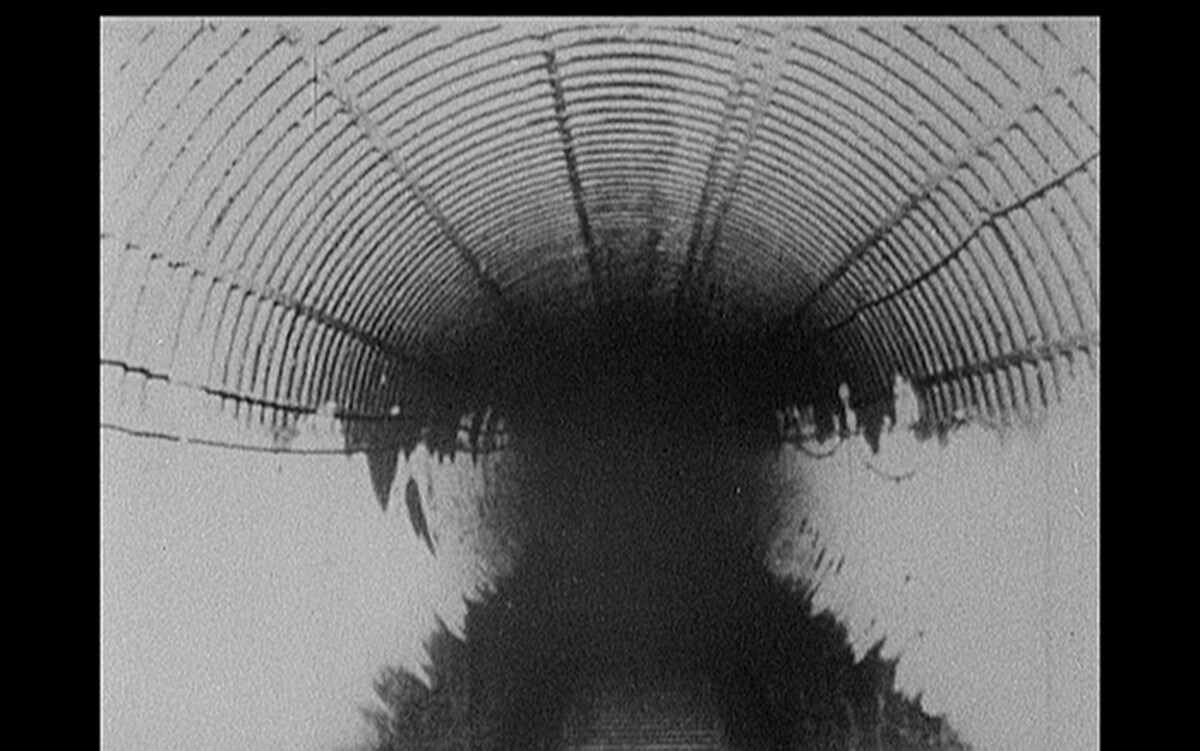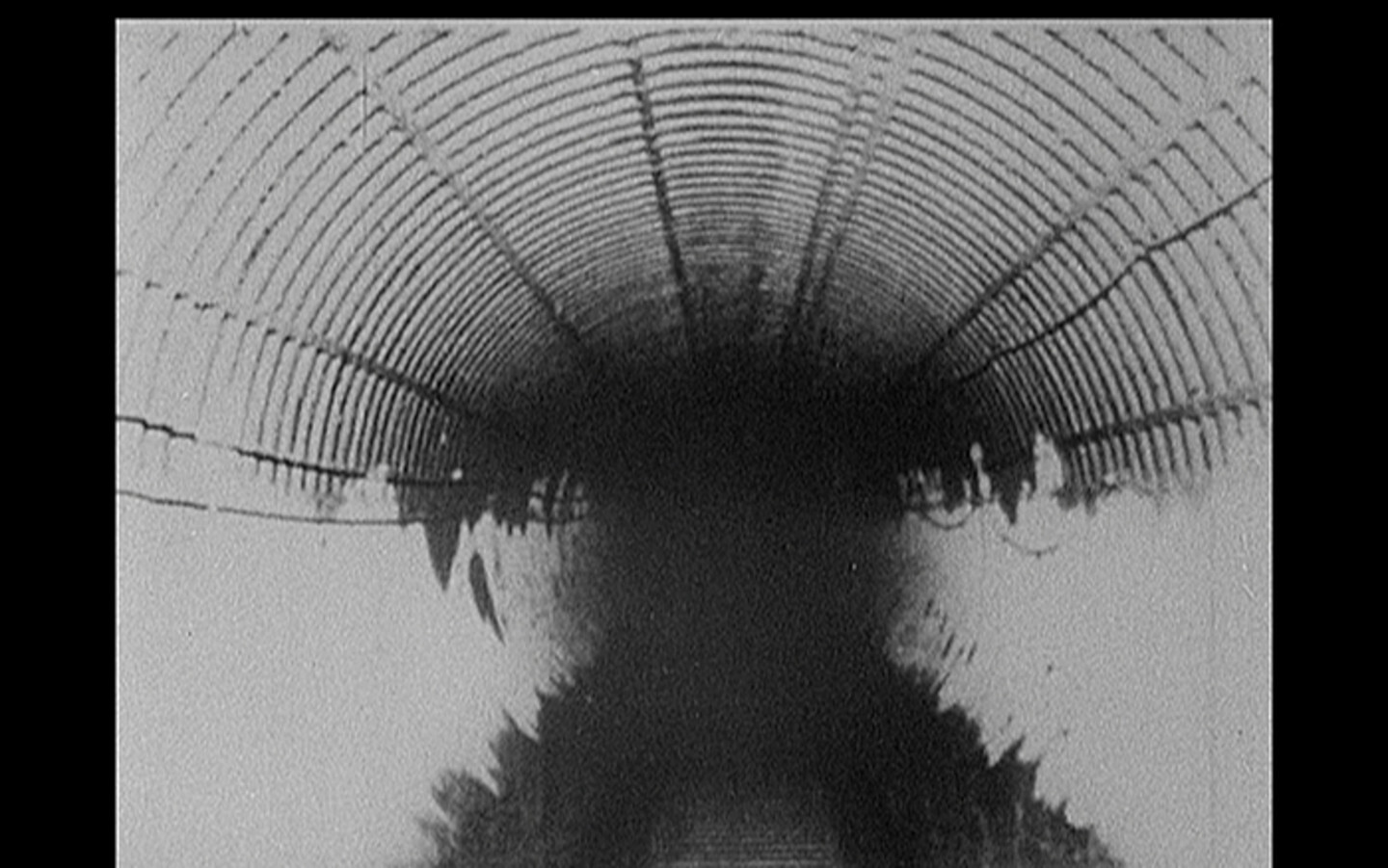July 19, 2012
e-flux and Anselm Franke present a film screening in conjunction with the exhibition Animism, on view at e-flux until July 28.
Ken Jacobs introduces his works Let There Be Whistle Blowers, 2005, The Green Wave, 2011, and Flo Rounds A Corner, 1999, followed by screenings of Madonna Rosary Machine / The stones, shells. Conversation between Thomas and Helke Bayrle and Antje Majewski, Frankfurt 2011, and Jean Painleve’s Love life of the Octopus, 1967.
Screening program:
Ken Jacobs, Let There Be Whistle Blowers, 2005
video, b/w and color, sound, 18 minutes
A train passes though a tunnel and hurtles on to a station. Time and space are toyed with, things enter an impossible state of ongoing movement while going nowhere. The actual tunnel experience sets off a metaphysical one. Composed to the first part of DRUMMING by Steve Reich.
Ken Jacobs, The Green Wave, 2011
video, b/w and color, silent, 5 minutes
Consciousness reflects on unconsciousness, the latter often represented by the ocean. Here we have an ocean wave different from the others, singled out by the camera and headed for fame, its likeness recorded from two positions in space (among infinite others) and so providing a suspended stereo image.
Ken Jacobs, Flo Rounds a Corner, 1999
video, color, silent, 6 minutes
An experiment on the perception of movement and time. A woman on foot slowly turning the corner of a street in Taormina, Italy becomes a pulsating force, shunting forwards and back, side to side. As Mark McElhatten writes, “Figure and ground do a slow motion see-saw on shifting tectonic plates, and fold into Cezanne-like origami.”
Madonna Rosary Machine / The stones, shells. Conversation between Thomas and Helke Bayrle and Antje Majewski, Frankfurt 2011
HD video, color, sound, 36 minutes
“Madonna…” is a conversation with the artist Thomas Bayrle in his studio in Frankfurt, about prayers in machines, the weaving of the fabric of society, the meadow as a “wonderful and terrible symbiosis”, and a new concept of freedom starting from our bodies. For Bayrle, there is no fundamental difference between the technical and the natural world, between our bodies and a motor. He first experienced this when he was working as a weaver. “In any case, I didn’t trust my senses—when suddenly I started hearing human voices at a certain frequency in the dynamos. I put my ear to the engine block and actually heard the delicate, little voices of women singing somewhere deep in the transmission…” Helke Bayrle talks about stones as gods that are alive and tells us how she helps shells to move from one ocean to another: “So I threw Chinese shells into the sea in England, or in Italy, and vice versa, threw Italian shells into the Chinese sea.”
Jean Painleve, The Love life of the Octopus, 1967
b/w, film transferred to dvd, 14 minutes
The trigger for “The Love Life of the Octopus,” Painlevé recounted, was early encounters with octopi, during which he recognized their intelligence, impressive memory, and capacity to express emotions. The film introduces us to the “assemblage” of the octopus, its affective web of relations with its environment, exploring form and movement along a porous border between organism and world, thus involving us in a “becoming-animal” of sorts. Painlevé also engages us in the immersive effects of cinema and narration in both a very thoughtful and passionate way.
Total run time: 79 minutes
Ken Jacobs is an essential figure in the history of American avant-garde film. His work explores the mechanics of the moving image and the very act of viewing. Whether undertaking archaeological journeys to the dawn of cinema or scrutinizing the interstices of new digital technologies, Jacobs’ work investigates, provokes, and draws power from the mysteries of the nature of human vision. His work has been shown at the American Museum of the Moving Image, the New York Film Festival, and MoMA. He founded the Department of Cinema at SUNY Binghamton and was named Distinguished Professor of Cinema in 2000.
Antje Majewski is a painter, photographer, curator and filmmaker who became best known through her series of photorealistic, figurative paintings, which grapple with existential questions like friendship, love, masquerade, and death. Her topics also revolve around the psychology of individuals in relation to society, history, and social norms.
Jean Painlevé (1902-1989) was a film director, actor, translator, animator, critic and theorist. He began making his own films in 1927, directing more than two hundred science and nature films in his lifetime. Painlevé’s films categorically refute the modern myth that science is demystifying the world. He intended his films to be taken seriously as scientific documentaries and conducted meticulous research. Only their artistic form betrays his surrealist leanings.

